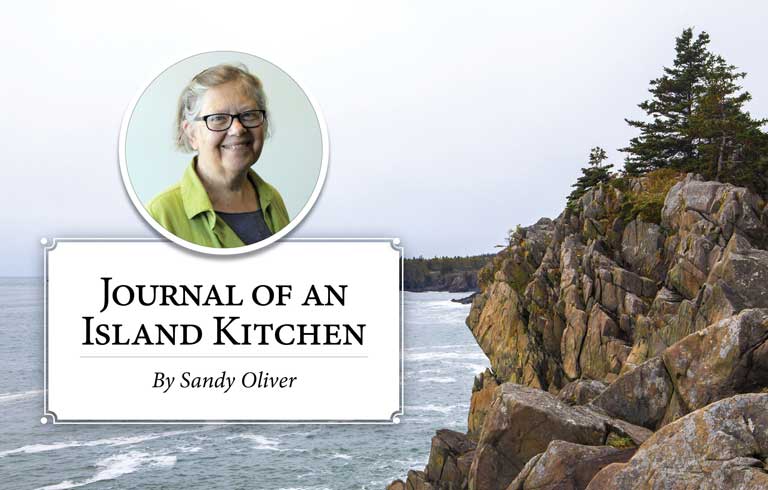Art, according to one Merriam-Webster definition, is a skill acquired by experience, study, or observation. Let’s tweak that to “and/or” observation. If that definition works for you, then, because it’s a joy to practice an art, let’s apply it to the part of daily life that starts in the kitchen.
THE ART OF AN ISLAND PANTRY
Most islands don’t have convenience stores open 24/7 to which you can dash out to grab a bag of sugar or a pound of butter. We have neighbors, for sure, and we probably agree that a borrowing raid conducted too frequently strains the bonds of friendship.
Your pantry needs the stuff you use all the time—flour, sugar, rice, pasta, ketchup, eggs. If you love Indian food then you’ll want and need all the special ingredients that provide the distinctive flavors of Indian cooking. If you seldom cook Indian food, lots of jars will languish on the shelf; get a food buddy who also cooks Indian and share.
When a storage container collects dust, it is probably a sign you don’t need to keep the contents constantly on hand, though you might use the ingredient periodically, like during the holidays or canning season. Always have vinegar, sugar, salt, and clear alcohol, because they are preservatives and can help you conserve food in an emergency.
The art of making a shopping list is seeing what isn’t there.
Herbs, spices, and sauces clutter storage; they retreat to the back of a cupboard, fade, lose all their charm. So my pantry spices include all the standards like ginger, cinnamon, thyme, and oregano, but also lots of cumin because I love cumin, and hardly any really hot capsicums except red pepper flakes, a little ground chipotle, rarely used cayenne, and standard chili powder.
Except for curry and chili powders, I keep few seasoning blends, because I can’t stand paying someone else to mix a few things together for me. If you don’t cook with lots of seasoning, premade blends make a lot of sense and don’t take up much space.
I buy spices and herbs that I don’t grow and dry from a co-op and in quantities reflecting their use. It seems nutty that most spices are sold in identically sized jars. I keep large jars of ginger, cinnamon, and cumin, and weeny jars of savory and rosemary. It may be a little compulsive but I observe alphabetical order on the spice shelves.
THE ART OF MAKING A SHOPPING LIST
The art of making a shopping list is seeing what isn’t there. That’s tougher to do than I ever imagined. I try to maintain an ongoing shopping list so whenever I use the last, or better yet, the next to last of any supply, I add it to the list. We omit that step sometimes when I am busy, distracted, or just dim-witted, or someone else opens the last box or can.
I try to make visible the need by turning the empty or near-empty storage jar upside down. That goes for the fridge, too.
Once a week I do what I call Empty (trash, compost, stove ashes) and Fill (wood boxes, oil, detergent, spice jars, toilet paper from bulk purchases—like buying olive oil in large containers but dispensing from a bottle with a pouring stopper).
It makes me slow down and think through my household supply chain.
I bet you buy in bulk, too; after all, you aren’t going to run often to the mainland market considering the time it takes plus ferry fare. Islanders think and organize ahead which makes us different from a lot of the population.
THE ART OF SHOPPING AT A FARMERS MARKET
If you go to a farmers market with a recipe in your hand, you’ll only be frustrated. Browse the market for what’s displayed, pick what looks delicious, take that home, then look up a recipe. If a vegetable looks unfamiliar, ask the grower how to use it.
Learn how to adapt a recipe to supply. I made a seasonal dish the other night out of tomatoes, zucchini, corn, and orzo pasta. The recipe called for cherry tomatoes, in scant supply here at present, so instead I cut a paste tomato up into cherry tomato-sized pieces. The whole thing cooked for so long anyway that cherry tomatoes would have lost their distinctive shape.
When it comes to kitchen arts some of us are going to be Winslow Homer, or Andrew Wyeth, and others Jackson Pollock. If it works for you, then it’s all good.
Sandy Oliver is a food historian who cooks, gardens, and writes on Islesboro. She may be contacted at sandyoliver47@gmail.com.





